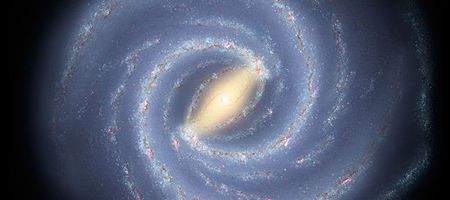Our galaxy is still reverberating from a strike by a small galaxy or massive dark matter structure.

Scientists studying observations of 300,000 nearby Milky Way stars by the Sloan Digital Sky Survey (SDSS) found that those in its main disk move up and down at about 20 to 30 kilometers per second, while orbiting the center of the galaxy ten times faster.
“We clearly observe unexpected differences in the Milky Way’s stellar distribution above and below the galaxy’s mid-plane having the appearance of a vertical wave – something that nobody has seen before,” says Queen’s University physicist Larry Widrow.
The researchers haven’t been able to identify what hit us. It could have been one of the small satellite galaxies that move around the center of our galaxy, or an invisible structure such as a dark matter halo.
It might not have been a single isolated event in the past – and may even be ongoing.
There are known to be at least 20 visible satellite galaxies that circle the center of the Milky Way, ranging in size from one million to one billion solar masses.
There may also be invisible satellites made of dark matter, believed to account for six times as much mass in the universe as ordinary, visible matter. Computer simulations imply that this invisible matter has formed hundreds of massive structures that move around our Milky Way.
More computer simulations indicate that over the next 100 million years or so, our galaxy will stop ‘ringing’, and the vertical motions of stars in the solar neighborhood will revert back to their equilibrium orbits – unless we get hit again.






